The bonito used for bonito flakes is unsuitable if caught in the waters near Japan due to its high fat content. Therefore, we use bonito with less fat, swimming near the equator in the Pacific Ocean. After being caught, the fish are immediately frozen on large ships and transported to Japan over approximately one week, where they are then landed.
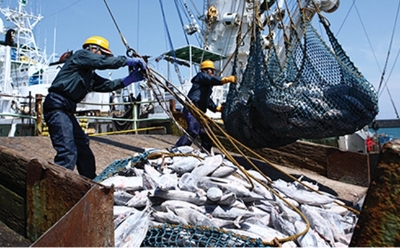
At Yaizu Port, our purchasers participate in auctions to buy bonito that has been landed there. We procure bonito with less fat, which is suitable for bonito flakes.
While fatty bonito is delicious for Sashimi or TATAKI, the bonito preferred for flakes is the one with less fat. Our integrated production process allows us to carefully select the bonito right from the procurement stage.
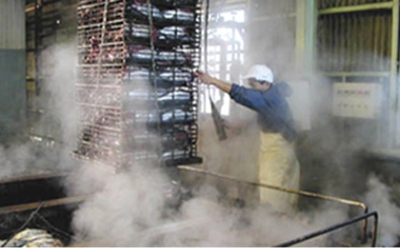
The frozen bonito is thawed overnight and then, using machines and knives, the head, innards, and tail are removed. The shaped fillets are placed in cooking baskets and undergo SHAJUKU (a boiling process). Afterwards, they are cooled, and each bonito is carefully deboned. The deboning process employs a traditional Yaizu method called MIZUBONE, where the bonito is placed in water on the palm of the hand, and the bones are meticulously removed.
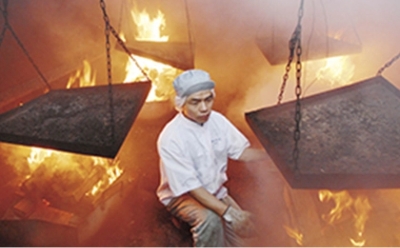
※Smoking with Firewood
The bonito is stacked in baskets prepared for BAIKAN. After sterilization with steam, the BAIKAN process is conducted. BAIKAN refers to smoking with firewood. Initially, the bonito is smoked for about three days using firewood in a Yaizu-style dryer, adjusting the position relative to the fire. Next, the process continues in KYUZOKKO (which spans from the basement to the fourth floor. Firewood is burned in the basement and the first floor, and the heat and smoke are channeled to the bonito flakes arranged from the second to the fourth floor, finishing them). The bonito is smoked for 2 to 3 weeks, depending on the size of the fish.
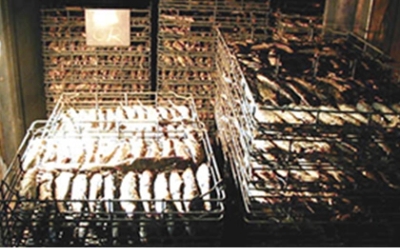
※Allowing the Moisture Inside the Bonito Flakes to Reach the Dry Surface
The process of BAIKAN and ANJOH in the KYUZOKKO (temporary storage) is alternated. By undergoing ANJOH, the bonito flakes are rested, allowing the moisture from the core to come to the surface. The type of firewood used for roasting can vary the scent that envelops the bonito flakes. Our company uses Konara and Kunugi wood, which gives the Yaizu bonito flakes their characteristic faintly sweet and gentle aroma.
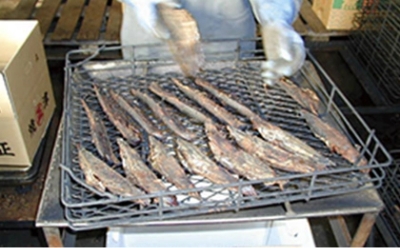
Each individual bonito flake is inspected and ranked upon completion. Moisture levels are measured to ensure proper drying. The bonito flakes (rough cuts) are then processed through magnets and metal detectors to complete the product. The bonito flakes (rough cuts) are then cut and ground to produce shaved flakes and dashi pack ingredients. Further processing involves extraction to produce products like noodle sauce.